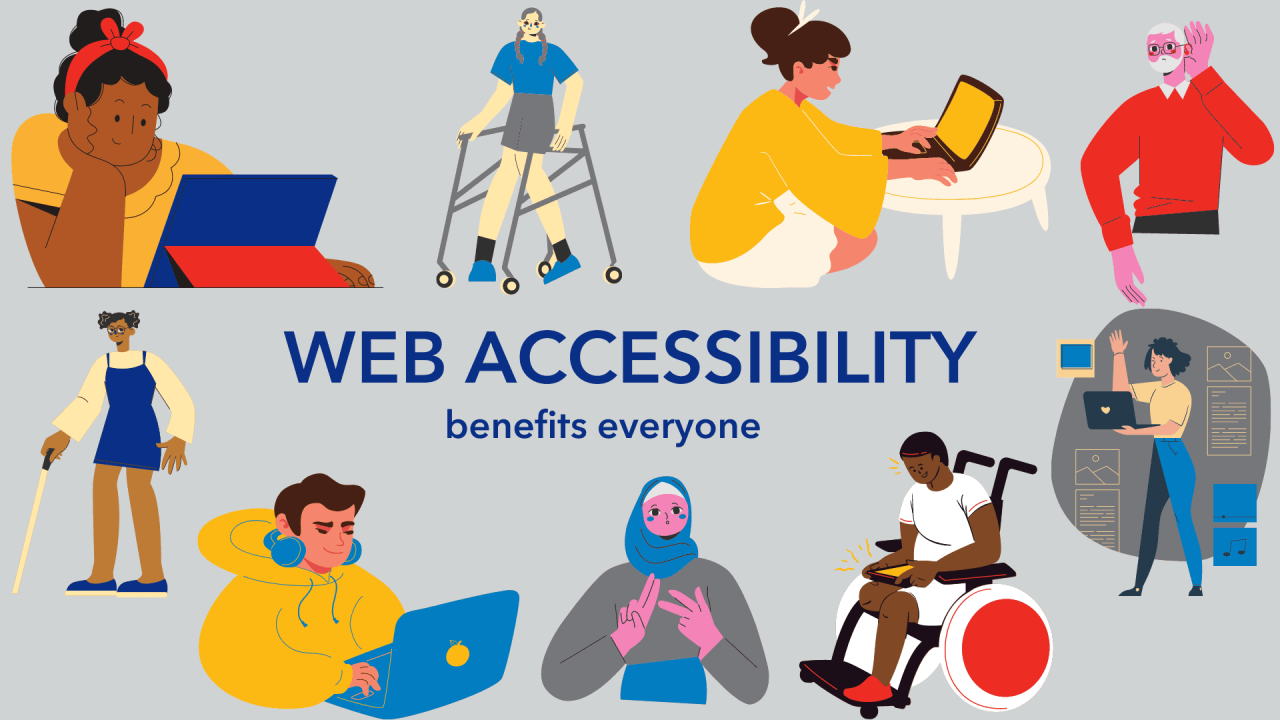
Accessibility in web design is about making websites usable for everyone, including people with disabilities. An inclusive web experience ensures that all users, regardless of their abilities, can navigate, understand, and interact with the content effectively. This article explores the importance of accessibility in web design, key principles and standards, and practical techniques for creating inclusive digital experiences.
The Importance of Accessibility
1. Legal Compliance
Many countries have laws and regulations requiring websites to be accessible. Non-compliance can result in legal consequences.
- Americans with Disabilities Act (ADA): In the United States, the ADA mandates accessible digital content.
- Web Content Accessibility Guidelines (WCAG): These international standards provide a framework for creating accessible web content.
2. Wider Audience Reach
Accessible websites can be used by a broader audience, including people with disabilities, older adults, and users with temporary impairments.
- Increased Engagement: Making a website accessible improves user experience for everyone, leading to higher engagement and retention rates.
3. Ethical Responsibility
Designing accessible websites is an ethical imperative, ensuring that all individuals have equal access to information and services.
- Inclusivity: Promoting inclusivity reflects positively on a brand’s reputation and values.
Key Principles of Accessible Web Design
1. Perceivable
Content must be presented in ways that users can perceive, regardless of their sensory abilities.
- Text Alternatives: Provide text alternatives for non-text content, such as images and videos, to assist screen reader users.
- Adaptable Content: Ensure content can be adapted for different sensory modalities without losing information.
2. Operable
Users must be able to navigate and interact with the website using a variety of tools and inputs.
- Keyboard Accessibility: Ensure all functionalities are accessible via keyboard for users who cannot use a mouse.
- Navigation: Provide clear and consistent navigation mechanisms.
3. Understandable
Information and the operation of the user interface must be understandable.
- Readable Text: Make text content readable and understandable with clear language and logical structure.
- Predictable Behavior: Create web pages that operate in predictable ways to prevent confusion.
4. Robust
Content must be robust enough to be interpreted reliably by a wide variety of user agents, including assistive technologies.
- Compatible: Ensure compatibility with current and future user tools and technologies.
Practical Techniques for Accessible Web Design
1. Semantic HTML
Using semantic HTML tags enhances the meaning of web content and improves accessibility.
- Proper Tags: Use headings (
<h1>,<h2>, etc.), lists (<ul>,<ol>,<li>), and other elements correctly to provide structure. - Landmarks: Utilize ARIA (Accessible Rich Internet Applications) landmarks to define regions like headers, navigation, and main content.
2. Color Contrast
Ensure sufficient contrast between text and background to make content readable for users with visual impairments.
- WCAG Guidelines: Follow WCAG contrast ratio recommendations (at least 4.5:1 for normal text and 3:1 for large text).
- Color Blindness: Avoid using color alone to convey information. Use additional cues like text labels and patterns.
3. Keyboard Navigation
Design websites that can be fully navigated using a keyboard.
- Focus Indicators: Provide clear focus indicators for interactive elements to show users where they are on the page.
- Logical Tab Order: Ensure the tab order follows the logical reading order of the page.
4. Responsive Design
Make sure websites are usable on a variety of devices and screen sizes.
- Fluid Layouts: Use flexible grids and layouts that adjust to different screen sizes.
- Touch Targets: Ensure touch targets are large enough and spaced appropriately for users with motor impairments.
5. Alt Text for Images
Provide descriptive alt text for images to convey meaning to screen reader users.
- Descriptive and Concise: Write alt text that is descriptive yet concise, focusing on the image’s purpose and content.
6. Accessible Forms
Design forms that are easy to navigate and complete for all users.
- Labels and Instructions: Use clear labels and instructions for form fields.
- Error Messages: Provide helpful and accessible error messages that guide users to correct mistakes.
7. Multimedia Content
Ensure that multimedia content, such as videos and audio, is accessible.
- Captions and Transcripts: Provide captions for videos and transcripts for audio content to assist users with hearing impairments.
- Audio Descriptions: Include audio descriptions for important visual content in videos.
8. Testing and Validation
Regularly test your website for accessibility issues.
- Automated Tools: Use automated testing tools like WAVE, Axe, or Lighthouse to identify common accessibility problems.
- User Testing: Conduct usability testing with real users, including those with disabilities, to gather feedback and make necessary improvements.
Conclusion
Creating accessible web experiences is essential for reaching a wider audience, complying with legal standards, and upholding ethical values. By adhering to key principles such as perceivability, operability, understandability, and robustness, and by implementing practical techniques like semantic HTML, color contrast, and keyboard navigation, designers can build inclusive websites that serve all users effectively. As the digital landscape continues to evolve, prioritizing accessibility will remain crucial for delivering equitable and high-quality user experiences.



